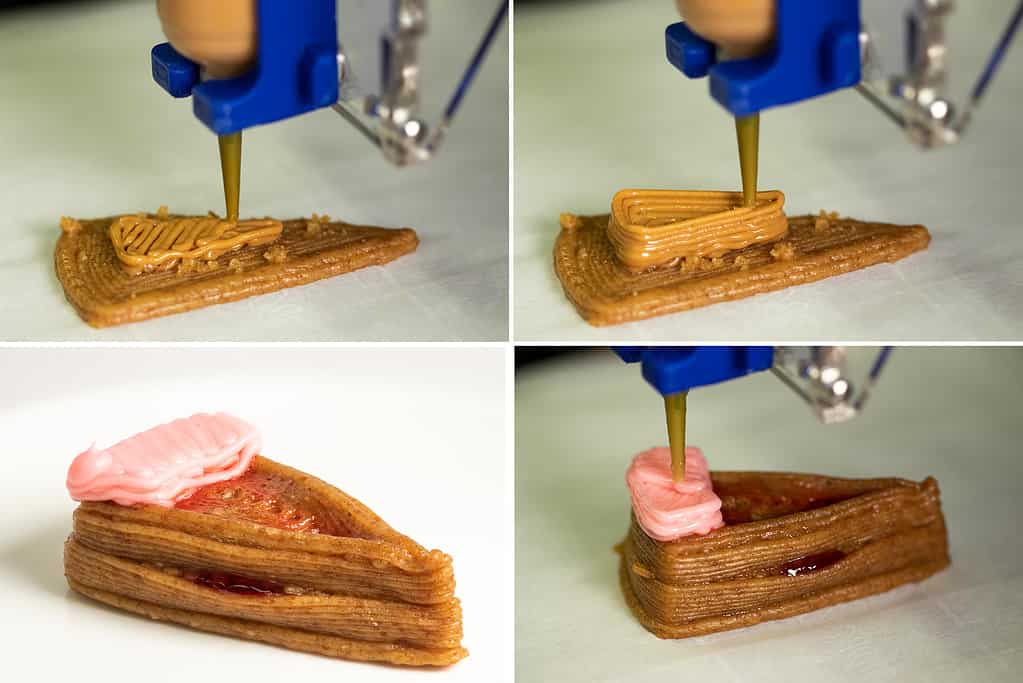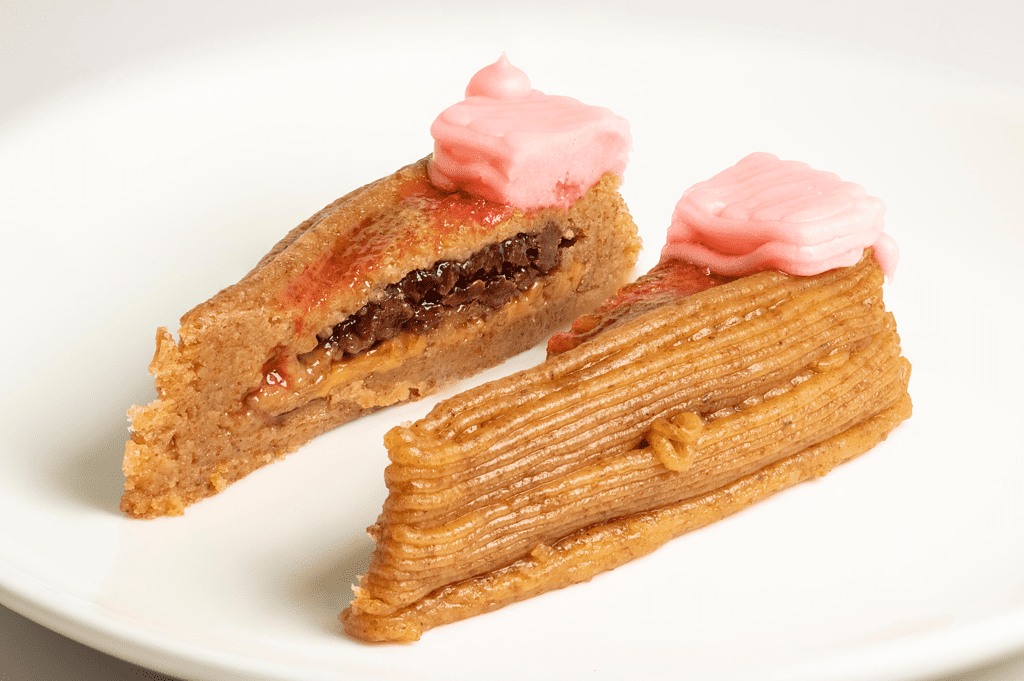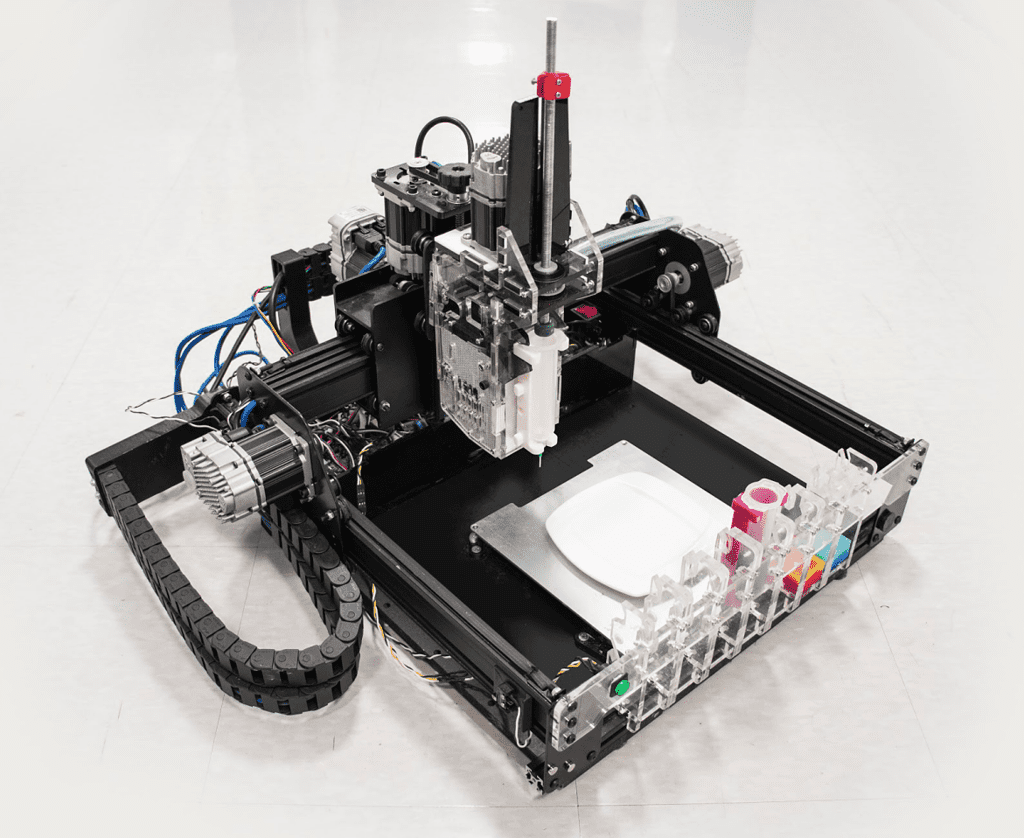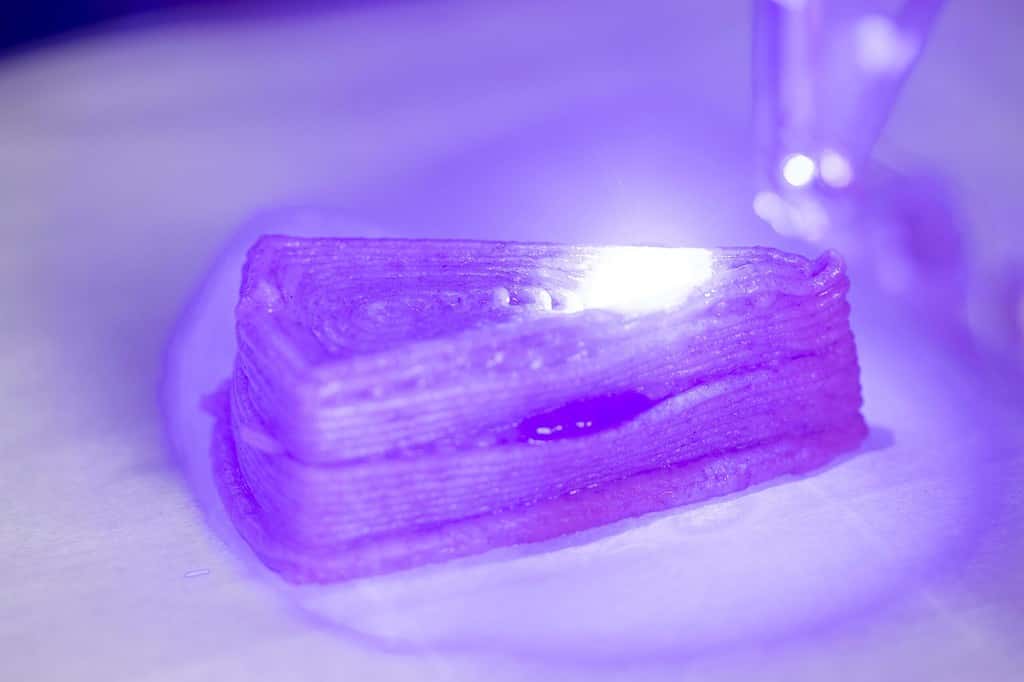Most people have, at least once, imagined how great it would be to create any desired food item just by pressing a button. That may not be very far off — thanks to 3D printing, you could soon have such a machine for real. A team of researchers at Columbia University has developed a robotic 3D printer that can print cheesecakes and many other mouth-watering food items at the push of a button. They revealed the details of the food printer in a recently published study.

Interestingly, the food printer is fairly low-tech in terms of hardware design. It’s just a few motors, a few screws for actuation, and an extrusion mechanism to deposit ingredients. However, the complexity comes on the software side.
Along with the required ingredients, a user also has to upload digital recipe designs to make the printer work, which seems pretty straightforward and has to be easier than following the recipe yourself.
Jonathan Blutinger, the corresponding author of the study and a postdoctoral researcher at Columbia Engineering, told ZME Science:
“Any food that can be made into a paste, liquid, or powder can be deposited on our machine (i.e. chicken, beef, vegetable purees, sweets, cheese, grains, etc.). The only user involvement happens prior to printing. Someone has to design the printed food, process the digital recipe file, and prepare the ingredients for printing. Once we press “GO” on the machine, we stand back and watch the printer work its magic.”

How does the robotic 3D food printer work?
During the study, the researchers used their 3D printer to make cheesecakes. They first decided on a design for their cheesecake recipe and then came up with the relevant ingredient list. They bought all ingredients (including banana, graham crackers, Nutella, frosting, strawberry jam, peanut butter, and cherry drizzle) from the grocery store. Some of these ingredients which were not in a paste or printable form also underwent secondary processing.
The researchers used a Vitamix blender to turn the hard ingredients soft or mixed them with some additional easily available ingredients to make the items printable. Next, they ran the design file through a custom slice engine that converts a 3D tessellated model into a set of instructions for the machine, which can be thought of as a digital recipe file. So the machine now has a list of ingredients from which you can choose to print, and is fully calibrated for printing. At this point, the researchers uploaded their “print” and their job was done.
The machine created 3D-printed geometry by extruding a bead of food paste from each of its cartridges. By moving around in free space the printer traced out a shape, much the same way you’d add frosting to a cake to decorate it. The printer did this with each successive ingredient until they were all layered based on the instructions from the digital recipe file.

A delicious cheesecake was ready. The study authors examined the dish further to understand its layered structure in detail. They noticed that the 3D printer used graham crackers as the base ingredient to make the cake layers. Whereas Nutella and peanut butter were harnessed as supporting layers that held together banana puree, jam, and other soft ingredients together. When asked about the taste and nutritional quality of the cheesecake, Blutinger said:
“The ingredients of our cheesecake are not of a conventional cheesecake but the ingredients are the same ingredients that you would normally cook with. The nutritional value was not tabulated but due to the ingredients being different, I would assume the nutritional content is different as well.” He further added, “The idea behind this machine is to marry software with food. In doing so, you create possibility.”
3D food printing is “inevitable”

The robotic 3D printer proposed by the team at Columbia University is not the first food printing system. Scientists around the globe are working on similar technologies. In February a team of scientists from Rutgers University unveiled a 3D printer capable of giving out low-fat chocolate candies. Some researchers are also working on 3D-printed meat that will allow humans to eat meat without slaughtering animals. Hopefully, such technologies will also put an end to most of the ongoing animal cruelty practices on our planet.
Moreover, 3D printing, in general, decentralizes supply changes of the raw material that is being printed. According to the researchers, when applied to food, it will bring the robot owner closer to the raw food source by allowing them to manufacture their own custom high-quality meals from scratch. Plus, it’s also a very transparent process since you see everything that goes “in” and “out” of the machine and you are able to truly count the calories in your printed food items via the information available in the digital recipe file.
However, the researchers still need to simplify the process, especially on the software side because your average person cannot design food and create a digital recipe on his own.
“Right now, our machines work best with paste ingredients, but we working towards a more efficient way to deposit certain oils and powders. The software to design food ingredients is also not conventionally used for foods, so an environment for easier food design and a repository of available printable ingredients would be beneficial to have in the future,” said Blutinger.
When further asked if the machine is intended to replace humans in the kitchen, the study authors explained that the technology is inevitable but they don’t see it as solving a problem so much as it’s creating an opportunity. This robotic 3D printer will allow people to create new flavor expressions and food combinations. Instead of replacing humans in the kitchen, it will be merely augmenting and providing new opportunities and food possibilities.
The study is published in the journal Nature.


